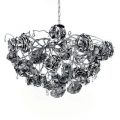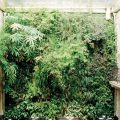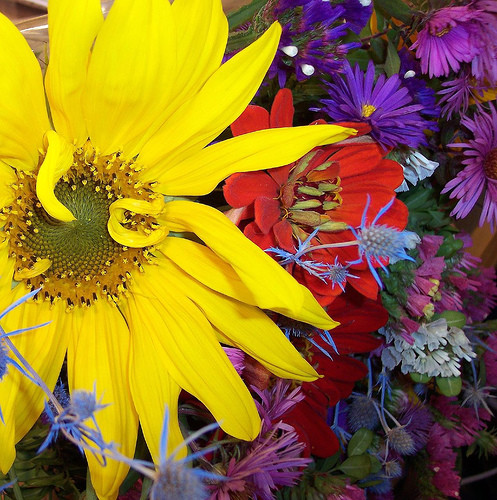 Plants in autumnAutumn flower beds are fullcharm. Luxurious garden plants, having gained strength over the summer, delight the eye. Phlox paniculata becomes a magnificent decoration of both the front areas of the garden and its secluded corners - its unpretentious flowers with an unusually diverse color of petals. There are more than 1500 varieties of phlox, among which there are many late-flowering ones. Phlox flowers have an unusual, tart aroma, especially noticeable in the evening hours. Only Monarda doubly can compete with them in terms of smell - one of the most famous garden plants containing essential oils. Monarda leaves the "autumn stage" quite early, along with the king of September flower beds - the cultivated dahlia, whose root tubers should already be dug up and dried by mid-October for further storage. But another famous representative of the same family of Compositae - aster - is destined to spoil flower lovers with its presence until late autumn. New Belgian and New England asters are distinguished by their tallness, and the bush aster can play the role of a border plant in autumn. Pink, white, carmine and lilac shades of asters are especially good in alternation with helenium and rudbeckia.
Plants in autumnAutumn flower beds are fullcharm. Luxurious garden plants, having gained strength over the summer, delight the eye. Phlox paniculata becomes a magnificent decoration of both the front areas of the garden and its secluded corners - its unpretentious flowers with an unusually diverse color of petals. There are more than 1500 varieties of phlox, among which there are many late-flowering ones. Phlox flowers have an unusual, tart aroma, especially noticeable in the evening hours. Only Monarda doubly can compete with them in terms of smell - one of the most famous garden plants containing essential oils. Monarda leaves the "autumn stage" quite early, along with the king of September flower beds - the cultivated dahlia, whose root tubers should already be dug up and dried by mid-October for further storage. But another famous representative of the same family of Compositae - aster - is destined to spoil flower lovers with its presence until late autumn. New Belgian and New England asters are distinguished by their tallness, and the bush aster can play the role of a border plant in autumn. Pink, white, carmine and lilac shades of asters are especially good in alternation with helenium and rudbeckia.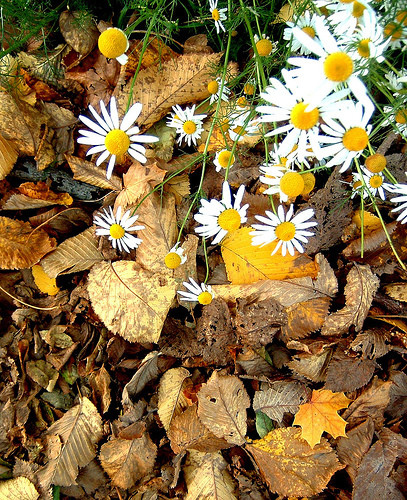 The lush clumps look like fabulous thicketsrudbeckia dissecta, one of the varieties of which is better known as the "golden ball". Two other very popular species - rudbeckia lucidus and rudbeckia glossy, although inferior to the "golden ball" in growth, are able to give some volume to an autumn flowerbed due to the brownish shades of their petals. Where gigantic growth is not needed, autumn helenium looks good, which, in addition to the inherent variety of colors in different varieties of this plant (from golden to reddish and brown), is able to change the color of its inflorescences at different times of flowering. Thus, on one helenium bush you can simultaneously find harmonious color transitions. Numerous varieties of Korean chrysanthemum - leaders of autumn flowering - they bloom until the first snowfalls. Chrysanthemum cannot but be popular, so good are its magnificent inflorescences, which can be both double and simple, of the most varied colors and sizes.
The lush clumps look like fabulous thicketsrudbeckia dissecta, one of the varieties of which is better known as the "golden ball". Two other very popular species - rudbeckia lucidus and rudbeckia glossy, although inferior to the "golden ball" in growth, are able to give some volume to an autumn flowerbed due to the brownish shades of their petals. Where gigantic growth is not needed, autumn helenium looks good, which, in addition to the inherent variety of colors in different varieties of this plant (from golden to reddish and brown), is able to change the color of its inflorescences at different times of flowering. Thus, on one helenium bush you can simultaneously find harmonious color transitions. Numerous varieties of Korean chrysanthemum - leaders of autumn flowering - they bloom until the first snowfalls. Chrysanthemum cannot but be popular, so good are its magnificent inflorescences, which can be both double and simple, of the most varied colors and sizes.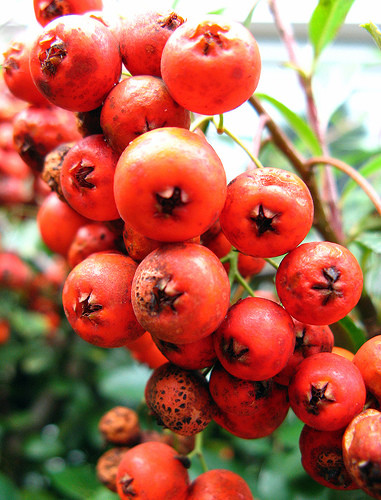 A good background for the cheerful golden yellowThe range of autumn colors is represented by trees and shrubs with brightly colored foliage. The leader among such plants is the maiden grape, whose beautifully dissected leaves turn burgundy with the onset of cold weather. Most often used for vertical gardening, maiden grapes or the Amur grape, which is somewhat less common in gardens, can completely braid a garden gazebo, fence walls, and house facades with their shoots. Speaking of foliage colors, one cannot fail to mention the silver oleaster and sea buckthorn, whose whitish-gray leaves bring their own unique note to the palette of the autumn garden. Magnificent maples, euonymus, brittle buckthorn with its lemon-yellow foliage - all these are old good friends of gardeners in the middle zone. Often, in addition to the rich color of autumn leaves, plants are able to please us with the brightness of fruits ripened in the sun. The already mentioned sea buckthorn decorates its branches with orange clusters of berries. Dogwood looks great in an autumn garden, bringing bright white balls of fruit against the background of pink or purple foliage to the rays of the autumn sun. Bright berries of hawthorn, rose hips, viburnum and rowan adorn the branches until late autumn. Barberry is also good, whose magnificently shaped red berries, collected in openwork brushes, can decorate any front garden. Thunberg barberry is famous for being a plant that can, due to the crimson color of its leaves, add texture to shrubbery.
A good background for the cheerful golden yellowThe range of autumn colors is represented by trees and shrubs with brightly colored foliage. The leader among such plants is the maiden grape, whose beautifully dissected leaves turn burgundy with the onset of cold weather. Most often used for vertical gardening, maiden grapes or the Amur grape, which is somewhat less common in gardens, can completely braid a garden gazebo, fence walls, and house facades with their shoots. Speaking of foliage colors, one cannot fail to mention the silver oleaster and sea buckthorn, whose whitish-gray leaves bring their own unique note to the palette of the autumn garden. Magnificent maples, euonymus, brittle buckthorn with its lemon-yellow foliage - all these are old good friends of gardeners in the middle zone. Often, in addition to the rich color of autumn leaves, plants are able to please us with the brightness of fruits ripened in the sun. The already mentioned sea buckthorn decorates its branches with orange clusters of berries. Dogwood looks great in an autumn garden, bringing bright white balls of fruit against the background of pink or purple foliage to the rays of the autumn sun. Bright berries of hawthorn, rose hips, viburnum and rowan adorn the branches until late autumn. Barberry is also good, whose magnificently shaped red berries, collected in openwork brushes, can decorate any front garden. Thunberg barberry is famous for being a plant that can, due to the crimson color of its leaves, add texture to shrubbery.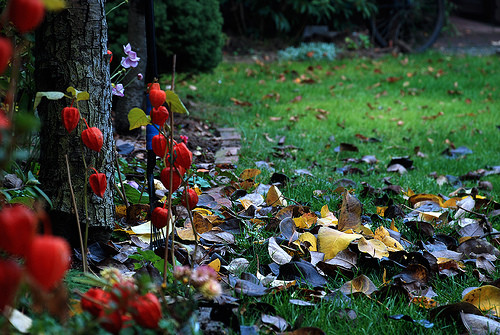 Low-growing forms of barberry are often plantedAlpine hills. Here you can also find heathers and ericas blooming until the very cold weather - unusually diverse and very common plants in the West, which have not yet gained worthy popularity in our gardens. Pretty, diversely colored heather inflorescences easily endure the first frosts and retain their decorative effect until the snow cover falls. Growing these plants will be much easier if, when planting them on the site, you bring from the neighboring forest leaf litter with mycorrhiza in it - a necessary component for the successful growth of all representatives of the Heather. In rockeries and on the lawns of the autumn garden, you can often find colchicums or crocuses, reminiscent of crocuses in their appearance. Colchicums delight the eye with the richness of pink and lilac shades of their fairly large flowers. The absence of foliage, which dies off in the summer, in mid-July, leaves these plants completely defenseless against autumn showers. To save the delicate petals of colchicums from heavy drops of rain, you should arrange canopies for them or transplant them under the canopy of the branches of garden shrubs. In addition, you need to remember that colchicum is poisonous, and wash your hands thoroughly after "communication" with the beauty.
Low-growing forms of barberry are often plantedAlpine hills. Here you can also find heathers and ericas blooming until the very cold weather - unusually diverse and very common plants in the West, which have not yet gained worthy popularity in our gardens. Pretty, diversely colored heather inflorescences easily endure the first frosts and retain their decorative effect until the snow cover falls. Growing these plants will be much easier if, when planting them on the site, you bring from the neighboring forest leaf litter with mycorrhiza in it - a necessary component for the successful growth of all representatives of the Heather. In rockeries and on the lawns of the autumn garden, you can often find colchicums or crocuses, reminiscent of crocuses in their appearance. Colchicums delight the eye with the richness of pink and lilac shades of their fairly large flowers. The absence of foliage, which dies off in the summer, in mid-July, leaves these plants completely defenseless against autumn showers. To save the delicate petals of colchicums from heavy drops of rain, you should arrange canopies for them or transplant them under the canopy of the branches of garden shrubs. In addition, you need to remember that colchicum is poisonous, and wash your hands thoroughly after "communication" with the beauty.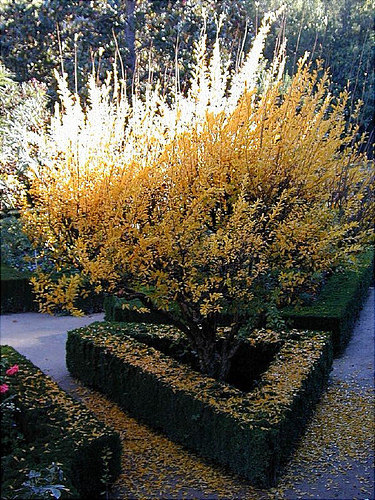 If you think that the autumn areanot decorative enough, remember that there is a wonderful gardening technique that solves many problems - container gardening. Asters and chrysanthemums, variegated coleuses and the same heathers look great in pots, placed both in the green thicket of the lawn that has grown over the summer, and along garden paths. With the onset of frank cold, the containers can be collected and kept for some time on the windowsills in the house, and, looking at the snow that has fallen outside the window, remember the beauty of the past autumn, and also think that every winter is just the threshold of a new summer.
If you think that the autumn areanot decorative enough, remember that there is a wonderful gardening technique that solves many problems - container gardening. Asters and chrysanthemums, variegated coleuses and the same heathers look great in pots, placed both in the green thicket of the lawn that has grown over the summer, and along garden paths. With the onset of frank cold, the containers can be collected and kept for some time on the windowsills in the house, and, looking at the snow that has fallen outside the window, remember the beauty of the past autumn, and also think that every winter is just the threshold of a new summer.

Making Money with Desserts: Success Stories
Evgeniya Polischuk (Fedutinova) instagram:@evgeniyafedutinovavk.com/janeshomebaking– It all started with baking for family and friends. Gradually, I started posting photos of my baked goods on Instagram – and orders started coming in. I made my first custom-made cake on October 13, 2014, and a little earlier I started making macaroons and cupcakes. You could say that the business “found me”, I am very […]

Soups are cold recipes with photos
Cold cucumber soup with yogurt and lemonsorbet from the chef of the restaurant La Taverna Alexander Zhurkin Photo: Getty Images Ingredients: Plain yoghurt – 125 g Cucumber – 150 g Lemon/lime sorbet – 50 g Cocktail shrimp – 24 g Fresh ginger juice – 1 g Lime juice – 5 g Fresh orange juice – 5 g Parsley – 1 g Pink pepper – 1 g Watercress – […]

barbeque kebab
Pork tenderloin in glaze Photo:Dmitry Bayrak/dbstudioPreparation time: 20 minutes + marinating time.Calories: 454 kcal per serving.For 4 servings: 4 pork tenderloins (approximately 300 g each), 1 onion, 2 cloves of garlic, 1 tsp. lemon zest, 1 tsp. lemon juice, a pinch of ground cumin, coriander and turmeric, 1 tbsp. vegetable […]

Pierre Duacan: dietary recipes: Ducane diet
Beetroot soup Photo:Season’S, Luxury Hotels RepresentationYou will need:· Boiled beetroot – 60 g· Fresh cucumbers – 20 g· Red radish – 20 g· Green onions – 10 g· Egg – 1 pc.· Drinking mineral water – 200 g· Salt – 1 gPreparation:· Boil the egg and beetroot.· Grate the cucumbers, radish and part of the beetroot. Put everything […]
